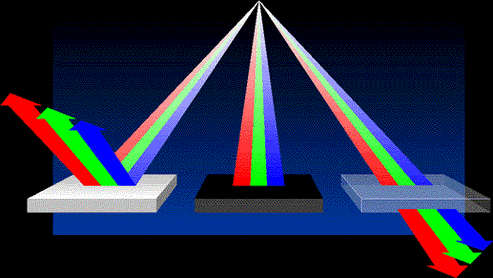Absorbed
Absorption is used to described the journey of a drug travelling from the site of administration to site of action.[1][2]
Absorbed definition, deeply interested or involved; preoccupied: He had an absorbed look on his face. Absorbed is a crossword puzzle clue. Absorbed is a crossword puzzle clue that we have spotted over 20 times. There are related clues (shown below.



Absorbed Crossword
Successfully describing absorption involves several steps. First, the drug needs to be introduced via some route of administration (oral, topical-dermal, etc.) and its dosage form (e.g., tablets, capsules, solutions) is supposed to be given.[3]
In other situations, such as intravenous therapy, intramuscular injection, enteral nutrition and others, absorption is even more straightforward and there is less variability in absorption and bioavailability is often near 100%. It is considered that intravascular administration (e.g. IV) does not involve absorption, and there is no loss of drug.[4] The fastest route of absorption is inhalation, and not as mistakenly considered the intravenous administration.[5]
Absorption is a primary focus in drug development and medicinal chemistry, since the drug must be absorbed before any medicinal effects can take place. Moreover, the drug's pharmacokinetic profile can be easily and significantly changed by adjusting factors that affect absorption.
Dissolution[edit]
In the most common situation, a tablet is ingested and passes through the esophagus to the stomach.
The rate of dissolution is a key target for controlling the duration of a drug's effect, and as such, several dosage forms that contain the same active ingredient may be available, differing only in the rate of dissolution. If a drug is supplied in a form that is not readily dissolved, the drug may be released more gradually over time with a longer duration of action. Having a longer duration of action may improve compliance since the medication will not have to be taken as often. Additionally, slow-release dosage forms may maintain concentrations within an acceptable therapeutic range over a long period of time, as opposed is quick-release dosage forms which may result in sharper peaks and troughs in serum concentrations.
The rate of dissolution is described by the Noyes–Whitney equation as shown below:
Where:
- is the rate of dissolution.
- A is the surface area of the solid.
- C is the concentration of the solid in the bulk dissolution medium.
- is the concentration of the solid in the diffusion layer surrounding the solid.
- D is the diffusion coefficient.
- L is the diffusion layer thickness.
As can be inferred by the Noyes-Whitney equation, the rate of dissolution may be modified primarily by altering the surface area of the solid. The surface area may be adjusted by altering the particle size (e.g. micronization). For many drugs, reducing the particle size leads to a reduction in the dose that is required to achieve the same therapeutic effect. The reduction of particle size increases the specific surface area and the dissolution rate, and it does not affect solubility.
Absorbed 3
The rate of dissolution may also be altered by choosing a suitable polymorph of a compound. Different polymorphs exhibit different solubility and dissolution rate characteristics. Specifically, crystalline forms dissolve slower than amorphous forms, since crystalline forms require more energy to leave lattice during dissolution. The most stable crystalline polymorph has the lowest dissolution rate. Dissolution is also different for anhydrous and hydrous forms of a drug. Anhydrous often dissolve faster than hydrated; however, anhydrous forms sometimes exhibit lower solubility.
Chemical modification by esterification is also used to control solubility. For example, stearate and estolateesters of a drug have decreased solubility in gastric fluid. Later, esterases in the gastrointestinal tract (GIT) wall and blood hydrolyze these esters to release the parent drug.
Also, coatings on a tablet or a pellet may act as a barrier to reduce the rate of dissolution. Coating may also be used to modify where dissolution takes place. For example, enteric coatings may be applied to a drug, so that the coating only dissolves in the basic environment of the intestines. This will prevent release of the drug before reaching the intestines.
Since solutions are already dissolved, they do not need to undergo dissolution before being absorbed.Lipid-soluble drugs are less absorbed than water-soluble drugs, especially when they are enteral.
Ionization[edit]
Absorbed Twin
The gastrointestinal tract is lined with epithelial cells. Drugs must pass or permeate through these cells in order to be absorbed into the circulatory system. One particular cellular barrier that may prevent absorption of a given drug is the cell membrane. Cell membranes are essentially lipid bilayers which form a semipermeable membrane. Pure lipid bilayers are generally permeable only to small, uncharged solutes. Hence, whether or not a molecule is ionized will affect its absorption, since ionic molecules are charged. Solubility favors charged species, and permeability favors neutral species. Some molecules have special exchange proteins and channels to facilitate movement from the lumen into the circulation.
Ions cannot passively diffuse through the gastrointestinal tract because the epithelial cell membrane is made up of a phospholipid bilayer. The bilayer is made up of two layers of phospholipids in which the charged hydrophilic heads face outwards and the non-charged hydrophobic fatty acid chains are in the middle of the layer. The uncharged fatty acid chains repel ionized, charged molecules. This means that the ionized molecules cannot pass through the intestinal membrane and be absorbed.
The Henderson-Hasselbalch equation offers a way to determine the proportion of a substance that is ionized at a given pH. In the stomach, drugs that are weak acids (such as aspirin) will be present mainly in their non-ionic form, and weak bases will be in their ionic form. Since non-ionic species diffuse more readily through cell membranes, weak acids will have a higher absorption in the highly acidic stomach.
However, the reverse is true in the basic environment of the intestines—weak bases (such as caffeine) will diffuse more readily since they will be non-ionic.

This aspect of absorption has been targeted by medicinal chemists. For example, a suitable analog may be chosen so that the drug is more likely to be in a non-ionic form. Also, prodrugs of a compound may be developed by medicinal chemists—these chemical variants may be more readily absorbed and then metabolized by the body into the active compound. However, changing the structure of a molecule is less predictable than altering dissolution properties, since changes in chemical structure may affect the pharmacodynamic properties of a drug.
The solubility and the permeability of a substance that is a potential drug candidate are important physicochemical properties the scientist wants to know as early as possible [1][6]
Other factors[edit]
Other facts that affect absorption include, but are not limited to, bioactivity, resonance, the inductive effect, isosterism, bio-isosterism, and consideration.
See also[edit]
References[edit]
- ^Alsanosi, Safaa Mohammed M.; Skiffington, Craig; Padmanabhan, Sandosh (2014). 'Pharmacokinetic Pharmacogenomics'. Handbook of Pharmacogenomics and Stratified Medicine. Elsevier. pp. 341–364. doi:10.1016/b978-0-12-386882-4.00017-7. ISBN978-0-12-386882-4.
- ^Yang, Y.; Zhao, Y.; Yu, A.; Sun, D.; Yu, L.X. (2017). 'Oral Drug Absorption'. Developing Solid Oral Dosage Forms. Elsevier. pp. 331–354. doi:10.1016/b978-0-12-802447-8.00012-1. ISBN978-0-12-802447-8.
- ^LE.JENNIFER (2020-03-27). 'Drug Absorption - Clinical Pharmacology'. MSD Manual Professional Edition. Retrieved 2020-03-28.
- ^Kaplan Pharmacology 2010, page6, Absorption
- ^Kaplan Pharmacology 2010, Video Lectues, Absorption chapter
- ^W. Curatolo, Physical chemical properties of oral drug candidates in the discovery and exploratory development settings. Elsevier, 1998
Further reading[edit]
- Avdeef, Alex (2003). Absorption and Drug Development. Hoboken, N.J: Wiley-Interscience/J. Wiley. ISBN0-471-42365-3.
External links[edit]
Clue: Absorbed
Absorbed is a crossword puzzle clue that we have spotted over 20 times. There are related clues (shown below).
Referring crossword puzzle answers
Likely related crossword puzzle clues
Recent usage in crossword puzzles:
- Penny Dell - Oct. 10, 2020
- Penny Dell - Sept. 19, 2020
- Penny Dell - Sept. 17, 2020
- Penny Dell - Sept. 10, 2020
- USA Today - July 4, 2020
- LA Times - Sept. 29, 2019
- Evening Standard Quick - Sept. 19, 2019
- LA Times - Sept. 2, 2019
- Penny Dell - Aug. 19, 2019
- New York Times - Nov. 4, 2018
- WSJ Daily - Nov. 1, 2018
- Penny Dell - July 1, 2018
- Canadiana Crossword - June 11, 2018
- Penny Dell - April 30, 2018
- Evening Standard Quick - March 16, 2018
- Penny Dell Sunday - March 11, 2018
- Evening Standard Quick - Dec. 4, 2017
- The Guardian Quick - Nov. 24, 2017
- Pat Sajak Code Letter - July 1, 2017
- NZ Herald - June 5, 2017
